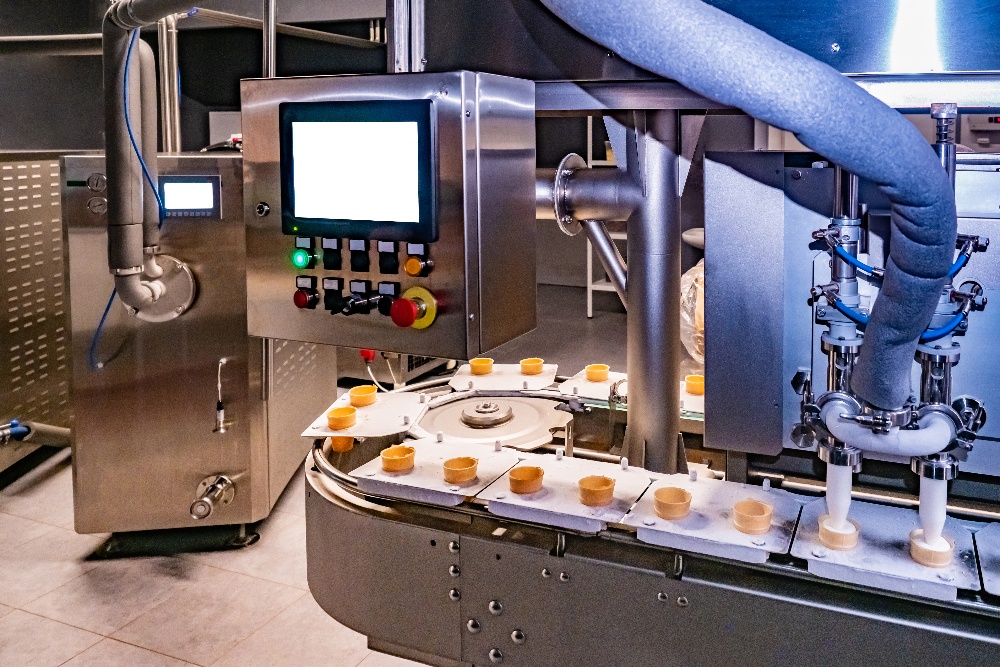September 10, 2019 | Manufacturing Technology, Machine Vision, Food and Beverage
Benefits of Machine Vision Technology for Food Manufacturers
 The government and other organizations have put food manufacturers under a microscope in an effort to ensure they’re following food safety standards and complying with regulations. While practices that ensure safety, quality, and consistency may require an initial investment, they pay off in the long run. After all, the Food Marketing Institute (FMI) and Grocery Manufacturers Association (GMA) estimate that the average cost of a recall for food companies is $10 million.
The government and other organizations have put food manufacturers under a microscope in an effort to ensure they’re following food safety standards and complying with regulations. While practices that ensure safety, quality, and consistency may require an initial investment, they pay off in the long run. After all, the Food Marketing Institute (FMI) and Grocery Manufacturers Association (GMA) estimate that the average cost of a recall for food companies is $10 million.
That’s not even the worst of it; following a product recall, many people will take to social media to vent their frustrations, resulting in a public backlash that can damage a brand’s reputation. Other consumers will opt to switch brands, resulting in further revenue loss. One way food manufacturers may be able to avoid these scenarios is through Machine Vision technology.
What Is Machine Vision Technology?
Machine Vision technology, also known as “industrial vision” or “vision systems,” has made great advances in the food and beverage industry in recent years to increase efficiency and quality while also maintaining regulatory compliance. Once considered nothing more than a barcode reader, today’s Machine Vision technology uses automated cameras and software, often mounted over assembly lines, to inspect products, collect data, check for inconsistencies, scan labels, direct product, and more, all at high-speeds without the need for worker intervention. That’s not all; today’s Machine Vision technology can check for cleanliness of processing equipment, which can impact food quality. Machine Vision systems can also operate 24/7, increasing output while maintaining quality.
5 Ways Machine Vision Technology Helps Food Manufacturers
Now that we’ve covered Machine Vision basics, let's take a deeper dive into the five areas where the technology really improves food manufacturing processes.
1. Safety Inspection
Foreign items that can make people sick or damage food quality can make their way into products during the production process, but Machine Vision systems can spot this and alert workers to the issue. The systems quickly and automatically identify material that doesn’t belong, even if it isn’t noticeable to the human eye. By identifying cross-contamination, Machine Vision can save your manufacturing business from potential lawsuits and negative media coverage. Machine Vision also checks for color, ripeness, and spoilage, further reducing the chance of introducing poor or unhealthy products to the masses.
2. Tracking and Tracing
Product codes, dates, lots, and barcodes can get mixed up during the production process, but Machine Vision tracks ingredients and coding through the entire production process to ensure this doesn’t happen. In addition, the systems keep a history of each package, so if there ever is an issue manufacturers can look through the log and find out where something went wrong.
3. Labeling
People have been known to experience allergic reactions to food that was mislabeled, resulting in government recalls and legal liability. Machine Vision spots any mislabeled products (often as a result of human error) and notifies workers of the issue so it can be corrected before the product goes out the door. Machine Vision also looks for misaligned or wrinkled labels, which can be corrected to protect the look of your product, and ultimately, your brand.
4. Packaging
This goes hand-in-hand with labeling. Machine learning can identify damaged packaging which could affect the consumer’s perception of the product when they see it on store shelves. It can also verify the integrity of recycled packaging materials to make sure they have been properly cleaned.
5. Container Integrity
Improperly sealed containers can lead to spillage or spoiled product, and it can introduce foreign material into food. With a Machine Vision system, any unsealed or damaged containers are immediately identified, and workers are notified. Machine Vision also checks fill levels, to ensure consistency between products and eliminate waste. It also confirms foils and tamper-proof seals are in place if necessary.
Improve Quality and Ensure Food Safety with Machine Vision
Food recalls are expensive, and bad product can result in brand damage and even death. The World Health Organization reveals that approximately 600 million people become ill each year after eating contaminated food, and 420,000 die. To be sure your company doesn’t contribute to these alarming figures, food and beverage manufacturers should consider a Machine Vision system to improve product quality and their standing in the marketplace.

